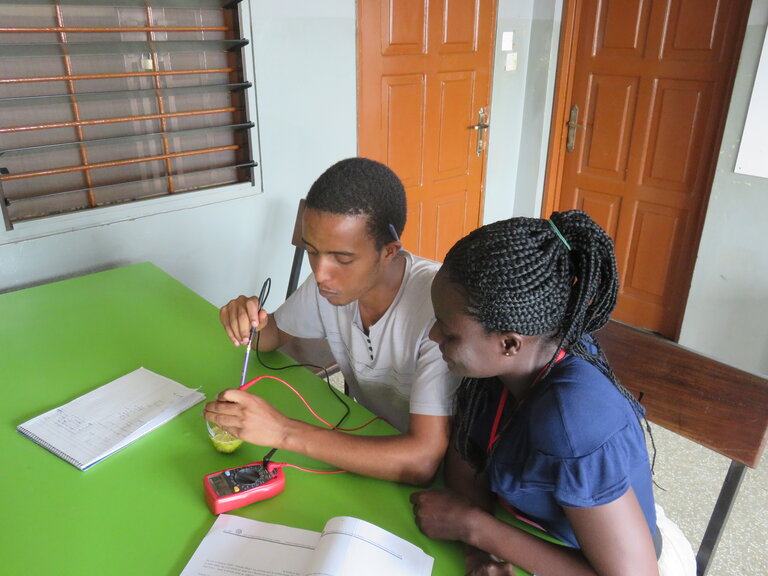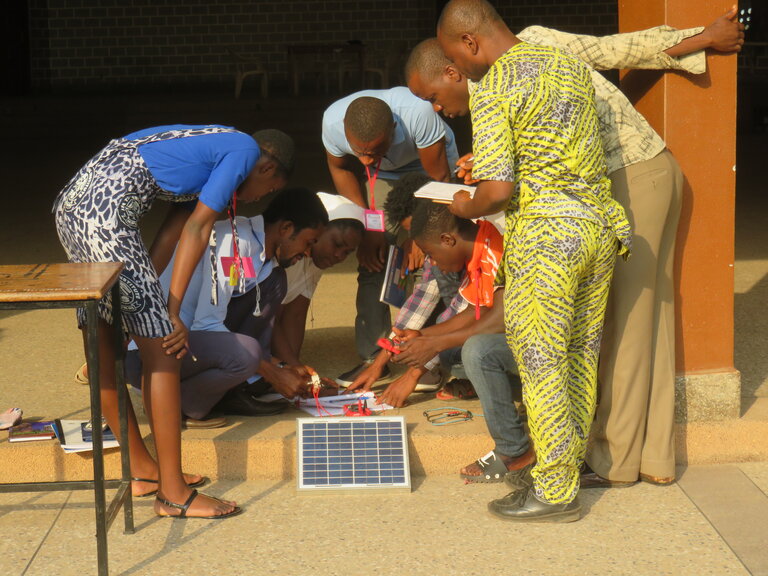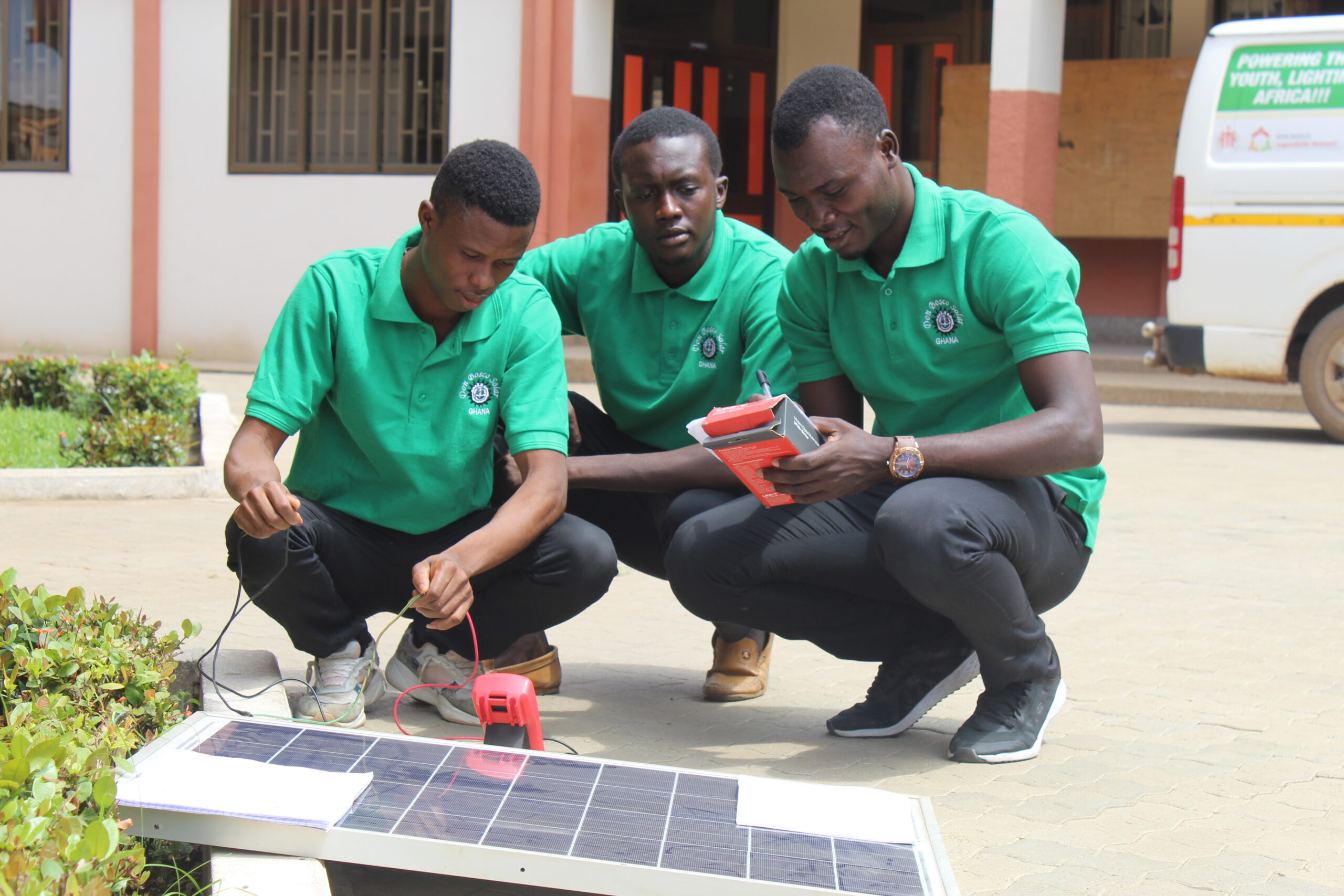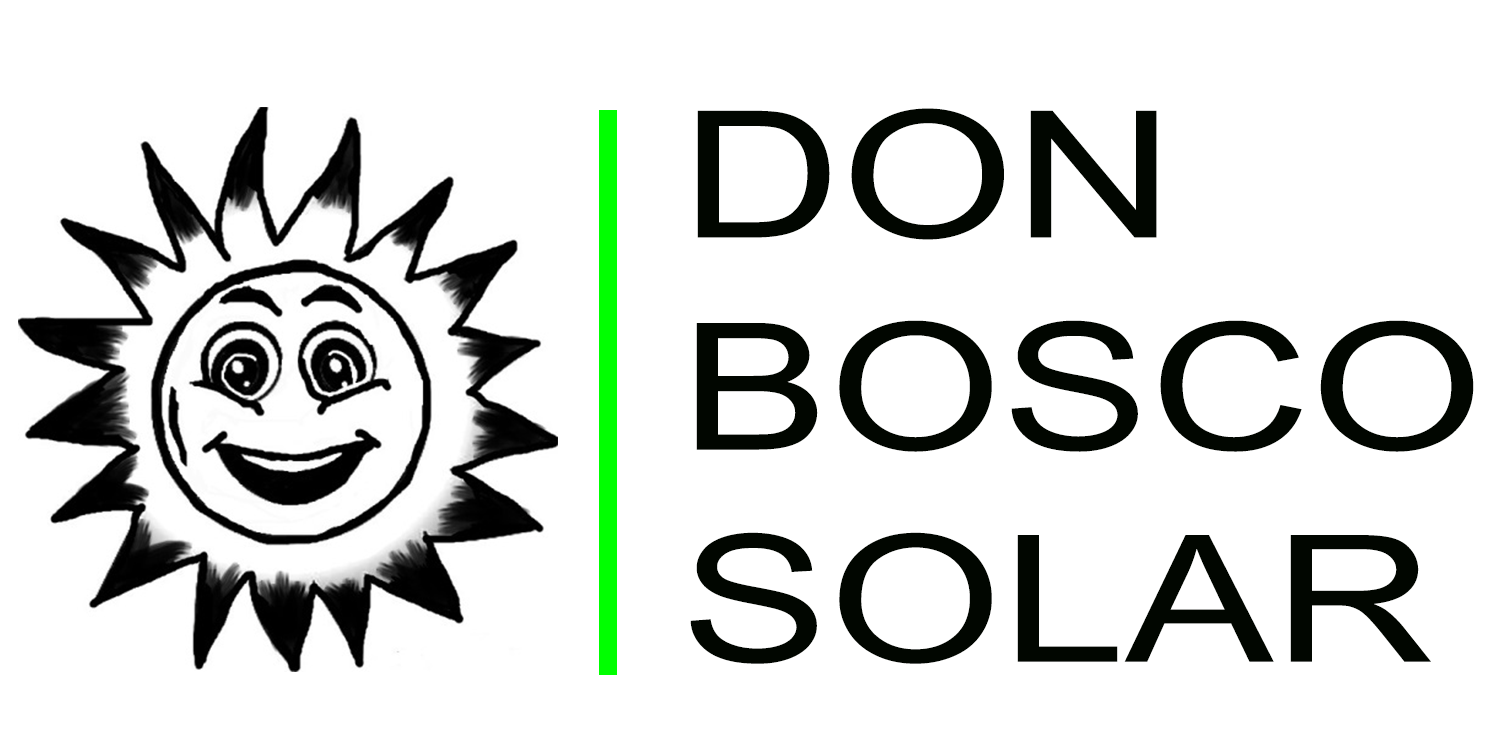Basic Solar PV Training
Gallery




Description
The basic solar photovoltaic course provides the students with both theory and practical knowledge to broaden the understanding of how energy is generated using PV solar system. The basic course is the beginning in acquiring the solar PV knowledge and skills. The main focuses are centred on equipping the participants with the requisite knowledge and skills to enable them acquired a job in the industry.
Target Audiences
The two months basic course is designed for interested young men and women between the age of 18 to 25 years with electric certificate or apprenticeship in electric. Participants are awarded with solar certificate at the end of the training.
Topic areas are
Introduction to renewable and non-renewable energy, the different type of energy sources, solar PV with characteristic of Off-grid electric sources, greenhouse effect or causes on climate changes, evolution of photovoltaic, the photovoltaic Cell, types of Solar cell, types of solar systems, key components of an off-grid solar system, DC coupled system inter-connections, Characteristics curves of PV-cells, Standard Test Condition (STC) for photovoltaic, About thermal losses, Installation and Maintenance of PV modules, Batteries in PV Systems, Charge Controller, Inverter, and Calculation ( panels, battery, inverter, charge controller), calculation for cable sizing

Entrance Qualification
This course deals with the basics of photovoltaic. The solar photovoltaic is mainly about electricity. Therefore, it is needed to understand the basics of electricity generation from the sun. As a result, understanding of the basics of electricity topics, like Voltage , Current, Resistance, Power (W), Energy (Wh), series and parallel connection is required. It is expected that the learner of this course already knows some basics of electricity. Actually this course is mainly prepared for learners who have already passed one year of basic electricity course.
Course Level
Energy remains the major resource to transform a developing country into a developed one. In the world we are in permanent contact with many forms of energy sources. The ability to use affordable energy sources is the fundamental basis for the prosperity of humans and countries on our planet. We use energy for cooking, light, communication, transport, industry among others. Africa continent contains a growing share of the world´s population, with its energy mainly derived from woody biomass, Petroleum fuels, and electricity.

Basic PV Professional Modules
These competing energy sources have impacted negatively on the environment. To reverse the trend of over dependence on fossils fuels, as well as enhance access to cheap and reliable energy, there is need for the continent to diversify its energy sources. As a result, renewable energy technologies to harness local resources should be embraced to generate energy. Such renewable energy technologies include solar, wind, hydroelectricity and biomass. In this course we focus on “solar energy” only. Solar energy can be used through solar thermal and photovoltaic energy technologies.
Choose A Plan
In this course we focus on photovoltaic technology that is, direct conversion from solar energy (sunlight) into electrical energy. Generation of electricity from the sun can be done in different scales; from very small-scale systems up to very large-scale systems. In this course we study the basics of electricity generation from the sun in a power range of up to 5kW in DC- coupled systems without connection to the national grid.

Why do we introduce this course ?
The photovoltaic is already a common technology since the 1980s. In Europe, for example, in Germany, the use of PV technology was driven first by the idea to get electric power supply for off grid areas like camping or remote homes in the mountains. Later in the early 1990s, PV systems were connected to the national grid. There was an installation of more than 43 GWp by 2017 in Germany. In 1990, solar panels were very expensive. However, with the mass production, the price came down dramatically and quality and efficiency increased at the same time. As a result, photovoltaic technology has become the cheapest and most environmentally friendly way to generate electricity, particularly in sunny countries. Since about the year 2000 the white LEDs are in the market which are better and cheaper year by year. Nowadays, they are the best lighting technology option. They are much more energy efficient than any other light source and much more reliable (when the good quality is bought). Recently a multi-billion investments from the industry in battery research and production has been seen. As a result, batteries are getting cheaper and better at the same time.
